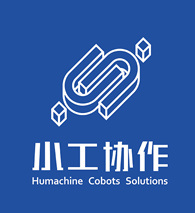NEWS
ChatGPT combined with industrial robots may disrupt the manufacturing landscape
Recently, ChatGPT products have been very popular, and stocks related to ChatGPT concepts have surged. The emergence of ChatGPT has had a huge impact on various industries, with the ecosystem of the service industry being transformed, the data analysis industry being reshuffled, and the global manufacturing landscape being completely overturned by AI represented by ChatGPT.
The focus of manufacturing development is to expand production and reduce costs, and labor costs have always been a problem that needs to be addressed in the manufacturing industry. With the rise of the AI industry represented by ChatGPT, the upper limit of labor costs in the future will be locked by AI and industrial robots.

In the past, replacing manual labor with automated robots has always been a trend in the development of the manufacturing industry. With the development, there are now products that have replaced a considerable portion of manual labor, but still require a certain number of engineers to operate and debug.
In the production and manufacturing process, 'human' is an important variable, and the production efficiency and product quality of workers with different skills and operating proficiencies vary greatly. Reduce the participation of "people" in production and manufacturing, and improve the standardization and intelligence of the production process.
The most ideal automated factory is an industrial robot with only AI control for production. AI debugs equipment, identifies and solves problems, and optimizes production processes. At this point, a true "unmanned chemical factory" has been achieved, and both manufacturing efficiency and yield will rise to a relatively high level.

While imagining the future, one should also focus on reality. It still takes a long way to achieve the goal of "unmanned factory" at the current level of development. Our company's product, the small worker collaborative robot, can serve as a communication bridge between the future and reality, helping small and medium-sized enterprises handle multiple varieties and small batches of products. Its characteristics of fast cutting, flexibility, and simple and safe operation are also conducive to reducing costs and helping enterprises achieve their long-term goal of being an "unmanned factory".
Recommended News












